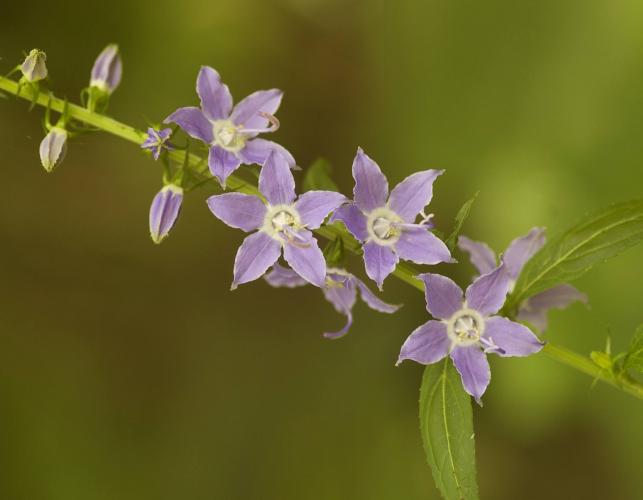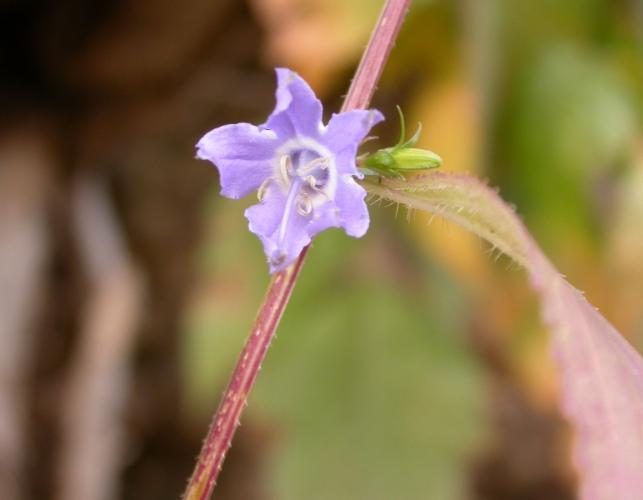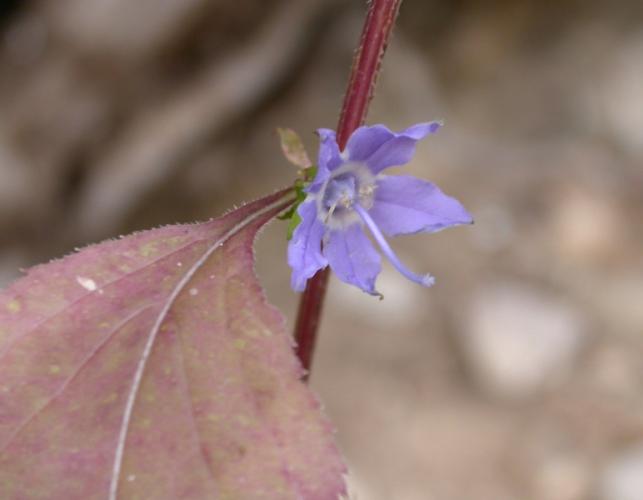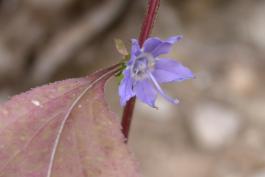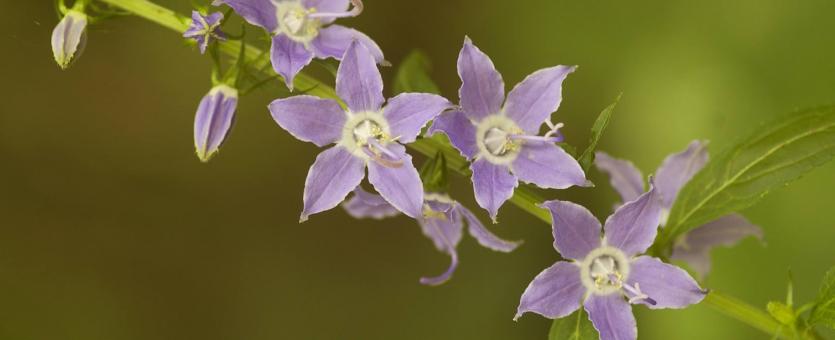
Tall, robust annual or biennial with a straight stalk, unbranched or sparsely branched near the top, often persisting in winter. Flowers tubular with 5 large, spreading lobes, saucer-shaped (not bell-shaped), arising singly or in clusters of 3 on a very long spike, light blue to rarely white. Flowers have a white ring at center. The style is curved, purple, and projects well beyond the flower. The flowers often open without any apparent sequence along the stalk. Blooms July–October. Leaves alternate, 3–6 inches long, lance-shaped, sessile or with very short stems. Sap is milky.
Similar species: Missouri has 4 species in the genus Campanula. Two of them are fairly uncommon natives. The fourth, creeping bellflower (C. rapunculoides), is an introduced Eurasian plant that can spread aggressively via creeping rhizomes. It has a bell-shaped corolla, and the style is straight and only slightly protruded (exserted) from the corolla. It is scattered mostly in the northwestern quarter of Missouri.
Height: to 6 feet.
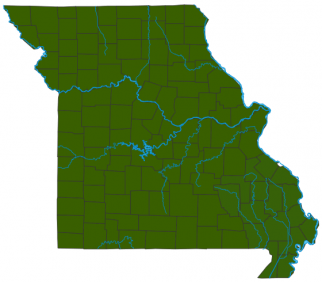
Abundant statewide.
Habitat and Conservation
Occurs in forest edges, open, moist woodlands, bluffs, disturbed areas, and roadsides.
Status
Because it is apparently not closely related to the other species in the genus, some botanists have given tall bellflower its own genus, "Campanulastrum." Other references may therefore call it "Campanulastrum americanum." However, critical characteristics often used to segregate it (such as the rotate, not bell-shaped corolla) are indeed found in other species of Campanula, so we retain it in that genus here.
Human Connections
This plant is an easy garden subject, spreading by seed. Although each flower is open for only a short time, the inflorescences keep producing new blooms. Whether it has been cultivated in a garden or blooms along trailsides "for free," this showy native flower pleases the eye.
Ecosystem Connections
Bumblebees and other long-tongued bees are the primary pollinators of this species, though other bees and butterflies visit the flowers, seeking nectar, pollen, or both. Deer reportedly eat this plant.
